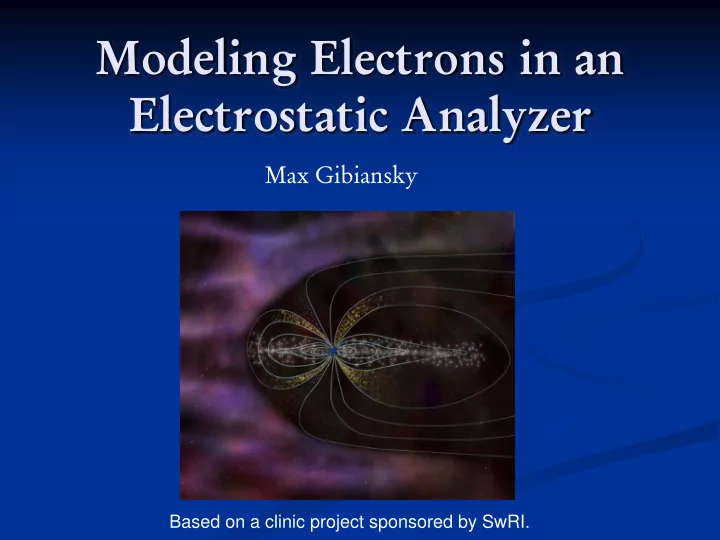

Modeling Electrons in an Electrostatic Analyzer Max Gibiansky Based on a clinic project sponsored by SwRI.
JUNO Satellite Magnetic Field Sensor ESA 60 ESA 300 ESA 180
Electrostatic Analyzer � Measures velocity distribution of electrons � Complicated geometry, several voltages Electrons enter Electrons detected 100 mm
Numerical Simulations � Starting point for analysis � SIMION software � Solves for E-fields � Launches particles
Scientific Computing Project � Model a simplified ESA numerically � Launch particles through the ESA � Compare energies of electrons detected to those from theory or from SIMION
Simplest ESA � 2D problem � Inner hemispherical plate � Outer hemispherical plate grounded � Electrons ‘detected’ if they can go around the circle
Analytical results � Assuming the gap is small, the field is constant � Balance centripetal force and force on electron � To be detected, electron must have kinetic energy
Non-ideal ESA � A gap makes the problem more interesting! � Outer plate has a thickness and a gap � Electrons have to get through the gap to be seen
Algorithms � Method of relaxation to solve Laplace's equation and calculate V � Discretize space – currently on a cartesian grid � Set boundary condition voltages � Set the potential at each point to be the average of the points next to it, repeat until changes are small.
Algorithms � Calculating E-field by taking the gradient of V � Second-order accurate centered difference formulas used in interior � First-order formulas would be used on edges � Doesn't matter – V is fixed to 0 on outside edges � E-field interpolated linearly between gridpoints
Algorithms � Trajectory calculation � Leapfrog method (second-order accurate)
Current status � Algorithms implemented and tested separately � Given exact field, error in trajectories is small � Given a grid and voltages, I can see fringe fields � Future work � Put it all together � Improve accuracy and efficiency - polar coordinates? � Make pretty pictures
Recommend
More recommend